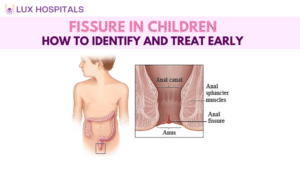Pelvic Floor Disorder in Women: Symptoms, Management and Lifestyle Changes

The pelvic floor consists of muscles and connective tissues that function to support important organs like the bladder, uterus, and rectum. Injury and weakening of muscles will lead to pelvic floor disorder in women (PFDs), which will have a major impact on a woman’s quality of life. PFDs can present with discomfort, pain, and urinary or bowel incontinence.
Understanding pelvic floor disorder in women is essential for early detection and effective treatment. In this guide, we’ll explore everything from the causes and symptoms to the various treatment options and lifestyle changes that can help.
Causes of Pelvic Floor Disorders
Several factors can contribute to pelvic floor disorder in women, including:
- Pregnancy & Childbirth: The physical demands of carrying and delivering a baby can weaken pelvic muscles.
- Aging & Menopause: With decreasing estrogen levels, muscle tone of the pelvic floor may be decreased, increasing women’s risk.
- Obesity: Excess weight puts more stress on the pelvic organs.
- Chronic Constipation: Continuous straining on the bowel over a period can weaken pelvic muscles.
- Heavy Lifting: Continuous heavy lifting without adequate support can strain the pelvic floor.
- Genetics: Some women are genetically susceptible to weaker pelvic muscles.
- Pelvic Surgery: Some of the surgical procedures, such as hysterectomy, disrupt the normal functioning of muscles of the pelvic floor.
- High-Impact Sports: High-impact athletes could have added pressure on the pelvic floor.
Symptoms of Pelvic Floor Disorders
Depending upon the type of pelvic floor disorder in women, symptoms may differ, but some of the symptoms common to all are:
- Urinary Incontinence: Urine leaking during coughing, sneezing, or laughing.
- Frequent Urination: Needing to urinate frequently or suddenly.
- Pelvic Pain: sensation of pain or pressure in the lower abdomen.
- Painful Intercourse: Painful or uncomfortable intercourse.
- Bowel Control Issues: Inability to control bowel movements.
- Organ Prolapse: Bulging or feeling that something is pushing through the vagina.
These previously listed symptoms can lead to improved outcomes and more rapid treatment.
Treatment Measures for Pelvic Floor Disorders
Based on the severity of the problem, treatment ranges from minimal lifestyle modifications to more complex surgeries.
1. Lifestyle Modifications & Physical Therapy
The muscles of the pelvic floor can be strengthened by exercising them with Kegel exercises.
- Dietary Modifications: A high-fiber diet will cure constipation, which subsequently decreases the load on the pelvic muscles.
- Bladder Training: It can heal incontinence by creating a routine urination.
2. Medicines
- Topical estrogen creams: They are used to tighten vaginal tissues.
- Muscle relaxants: They are usually prescribed for pelvic muscle spasms.
3. Surgery
- Pessary Device: It’s an insertable device that is inserted within the vagina to support prolapsed organs.
- Minimally Invasive Surgery: This is designed to fix scarred pelvic tissue.
- Nerve Stimulation Therapy: This can manage bladder control in more severe instances.
Precautions and Lifestyle Changes
Appropriate lifestyle modification can go a long way in avoiding or treating pelvic floor disorder in women.
- Keep a Normal Weight: This will reduce the weight on the pelvic organs.
- Practice Pelvic Floor Muscle Exercises: Incorporating Kegels in your daily routines is beneficial.
- Avoid heavy weight Lifting techniques have to be employed correctly at all times when lifting heavy weights.
- Drink Lots of Fluids & Take Fiber: This prevents constipation.
- Quit Smoking: This reduces the pressure on the pelvic floor due to coughing.
- Seek Early Treatment: Early treatment of symptoms can prevent worsening of conditions.
Early detection of these symptoms can result in better results and faster treatment. These symptoms identified at their early stage can result in faster treatment procedures.
Conclusion
Pelvic floor disorder in women can be difficult to treat, but the silver lining is that they are treatable if you get the right care and make some lifestyle changes. If you receive proper care and attention to your pelvic health through early interventions, exercises, and medical professionals’ guidance, you can do a lot to enhance your quality of life. If you do notice symptoms, don’t delay and consult a healthcare professional so that you can get the best treatment plan tailored specifically for you.
Frequently Asked Questions
Absolutely! Although issues related to age are more typical, young women, especially recent mothers, do experience pelvic floor disorders.
Yes, they can, but you need to use the right technique. If in doubt, it’s best to see a pelvic floor therapist.
Watch for symptoms such as a vaginal bulge or pelvic pain. A physician can make the diagnosis with a good examination.
Yes! A diet rich in fiber prevents constipation, which then reduces the stress on your pelvic muscles.
Not at all. Physical therapy and pessary devices are also excellent options, even though some severe cases may still require surgery.




















